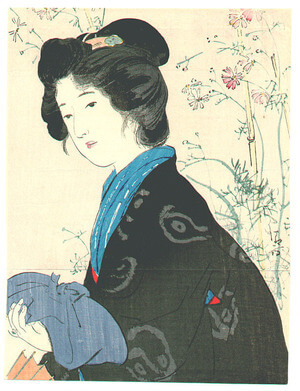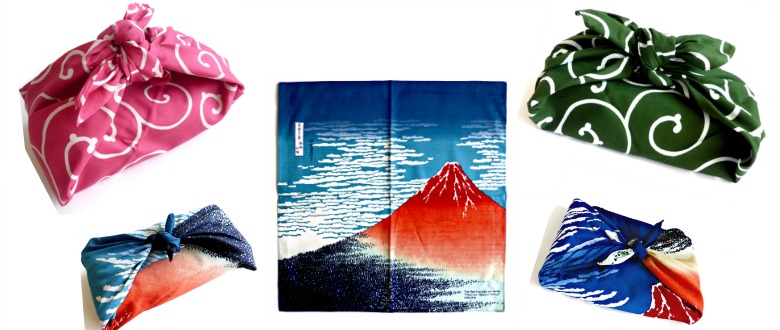Because of the negative impact of non-biodegradable plastics on the environment, many people are discouraged to use single-use plastic bags.
While paper bags are a better alternative, they tend to be less durable and usually end up in the landfill after a few uses.
To further lessen our carbon footprint, we can get inspiration from the Japanese use of Furoshiki. It is basically the art of using cloth for a variety of uses such as gift wrapping and carrying items.
Furoshiki Over The Centuries


Artwork by: Kaburagi Kiyokata (Photo Credit: Ukiyo-e.org)
Nara Period (710–794)
In the 8th century, the Japanese developed hokei-fuhaku, a square fabric purposely made to wrap valuable items including garments worn by Buddhist priests.
Edo Period (1603-1868)
Public baths are integral part of the Japanese culture. In Japanese society, these communal bathhouses are believed to foster emotional kinship through physical intimacy. And because people needed to bring clothing and other personal effects, Furoshiki became a very convenient way to do so. The cloth also doubles as a mat on which they can step on after bathing. In fact, the words “furo” means bath and “shiki” translates to mat or cover. The cloth used is usually made from cotton and can come in various sizes and designs.
It was also during this era that wealthy families developed Furoshiki that featured their own family crests and was considered a symbol of good luck.
Modern Japan (1868 and beyond)
As trade and commerce developed, Furoshiki became a convenient way for merchants to wrap their goods for sale. More Japanese people were also traveling for pleasure so it was common to see people carrying these wrapping cloths to bring their belongings.
With the invention of plastic, the popularity of Furoshiki began to wane. Although recently there is a resurgence in interest due to environmental concerns over the use of plastic. In 2006, Ms Yuriko Koike, Minister of the Environment, created the “Mottainai Furoshiki” as a symbol of Japanese culture to reduce waste.


(Photo Credit: Japan Ministry of the Environment)
Furishiki Etiquette
The Japanese have taken the art of Furoshiki very seriously because presentation is very important to them particularly when used to wrap a gift. When a person receives a gift wrapped in Furoshiki cloth, it would be customary for the giver to unwrap the cloth in front of the receiver and present the gift.
Creative Wrapping Techniques

(Photo Credit: Japan Ministry of the Environment)

(Photo Credit: Evermine Occasions)
Grab this book Wrapping With Fabric by Etsuko Yamada, who was born into a long-line of Furoshiki makers in Kyoto. She explains the “one cloth, many uses” ideology behind the craft, the etiquette of color and the craft’s fascinating history.
If you’re interested in learning Japanese, please visit https://courses.learnjapanese123.com for online lessons.
If you’re looking for a Hanko, Japanese name seal, please check https://japanese-name-stamp.com This would be an unique, ideal personal gift.

